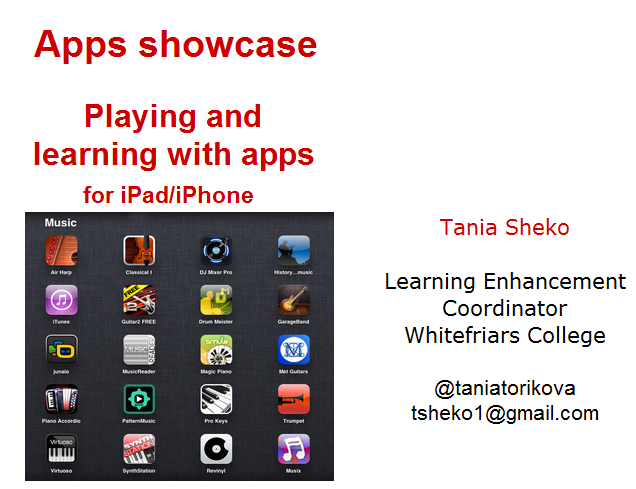The Victorian Information Technology Teacher’s Association‘s Mini Conference, A contemporary learning series: mobile learning with no limits, was held last Friday at Ringwood Secondary College, and focused on 1:1 devices, how they could be used effectively in the classroom, and how they were relevant to the Australian Curriculum. The principal of Ringwood Secondary College, Michael Phillips, Outstanding School Leadership Award Winner, delivered the keynote plenary, Synch and Swim, which centred on the theme of Leadership for Learning that keeps ahead of the wave.
Disruptive technological change is rapidly shifting the balance between traditional models of teaching and learning and those that are more blended. The factory model of learning has finally closed for business.
Directions for learning are limitless as:
• distributive technologies allow 1-to-many;
• collaborative technologies encourage many-to-many;
• personalised learning is possible through 1-to-1;and
• distributive feedback technologies promote 1-to-many or many-to-many.All of this is possible now in every classroom in every school.
Michael’s speech was a powerful message for educators and educational leaders to stop talking about 21st century teaching and learning as if it was set in the future, and accept that the future is here and requires a radical shift in teaching practice. When Michael said, “The factory model of learning has finally closed for business”, I felt like applauding and crying simultaneously, knowing that many schools were still in denial of this fact. Still, the conference participants were testament to the willingness to listen and learn, perhaps to embrace change.
Concurrent sessions are slightly frustrating because you can’t be in more than one place at the same time. The first session I attended was run by Roland Gesthuizen, a fellow Google Certified Teacher whose long experience in presenting enabled him to lead a relaxed but dynamic session which drew participants into discussion. One of Roland’s interesting observations was that the iPad was a microwave – it’s not the same as a laptop,it doesn’t do everything, but what it does, it does well and fast. After a fertile discussion, Roland demonstrated how he used Google apps such as Moderator in his teaching, and gave a quick overview of his experience in Sydney at the Google Teacher Academy.
I enjoyed presentations by Kevork Krozian and Clare Rafferty, both from Ringwood Secondary College. I think that Ringwood S.C. would be an exciting place to teach and learn. Some sessions I missed unfortunately, including Cecilie Murray‘s 2 talks which were full to bursting, and Jenny Ashby‘s session which ran at the same time as mine. Jenny and I presented at what Jenny referred to on Twitter as ‘graveyard shift’, the last session of the day. Despite the hour, I was impressed by the attentive audience I had in my room, and grateful for the positive feedback at the end of the session. I was also privileged to have SLAV’s executive officer Catherine Ryan and VITTA’s Jo McLeay join my session. Thankyou for your support and kind words especially as I was reluctant to present – not a fan of public speaking, so much more comfortable writing a blog post. I must say, though, that I ended up enjoying the experience.
If you are interested in having a look at my iPad/iPhone apps showcase – a spectrum of apps strewn across the curriculum – you can see it as a slideshow here. After so many hours of research I’m thrilled if anyone finds my resource useful.
And it’s always fantastic to see people you know at conferences. Happily, I had the pleasure of seeing Jenny Luca (and being introduced to Megan – hope to God I’ve remembered your name correctly) and John Pearce again. The online network is brilliant for maintaining the conversation but face to face is still the best.


